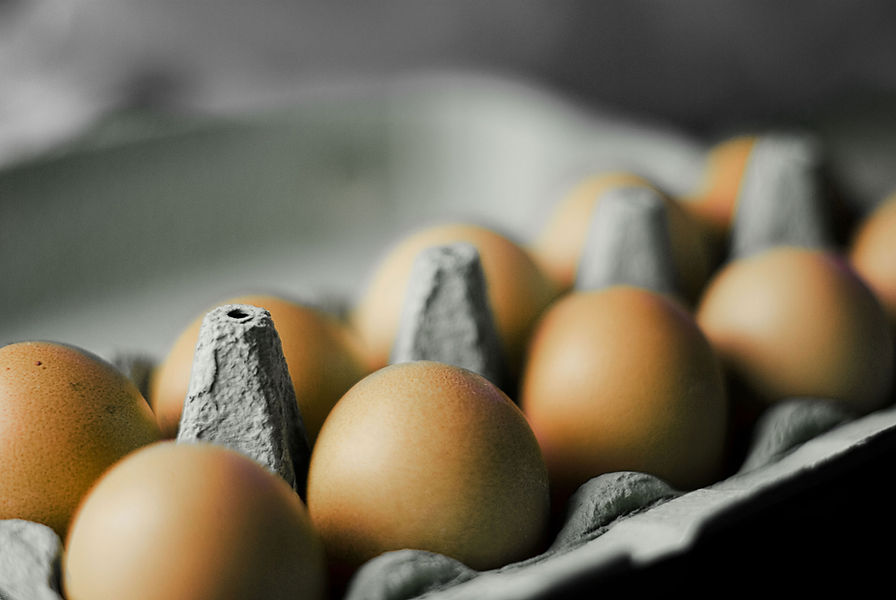Our Produce
Flowers from our Butterfly Garden
Each spring, our vibrant Butterfly Garden produces an array of stunning peonies—magenta, pink, white with red ruffles, rare yellow, and Claire de Lune varieties. Peonies hold a special connection for farm owner Barbara as they remind her of childhood days spent in her mother's garden.
Iron Feather Apiary's Raw Honey
Each spring, our bees gather pollen and nectar from the flowers in the Butterfly Garden to produce their honey. It is such a thrill each June to check the honey supers to see how much we might be able to harvest. Becoming certified beekeepers during the pandemic brought us a unique sense of peace when working in the hives, melting away the hectic everyday world. It’s no wonder scientists have discovered that beekeepers tend to live longer!
Free-range organic fresh eggs
Our farm’s growing flock of chickens produces a colorful variety of eggs! We have a medley of Buff Orpingtons, Speckled Sussex, and Americauna hens which lay beautiful blue eggs. Leading the flock is Gandalf the Grey, our Lavender Orpington rooster. Spoiled with daily treats of quinoa, blueberries, corn, and collards, our chickens lay delicious eggs with deep golden yolks.
Small-batch seasonal fruits, vegetables, & hay
In November, the farm’s Tamopan Persimmon trees yield an abundance of golden-orange fruit, which we sell locally and use to make delicious jams, persimmon bread, cookies, and pudding for the holidays. Before the peonies became the farm’s highlight, hay was our staple crop, and the sight of giant round hay bales against the scenic landscape makes hay season one of our favorite times of the year.



Seasons at the Farm
In the early spring for about three weeks in late April to May, our most prolific crop of peonies are blooming! We have a wide variety of peony bushes, from the traditional fragrant pom poms white edged with a bright pink-red, deep fuschia, Clair de Lune white and pink open blossoms, and even yellow peonies that are so fragrant they have become my favorite! You can find our honeybees are all over the bushes!
As the days lengthen, our hens begin to lay more and we will be gathering 6-9 blue and brown eggs per day! They will keep laying more or less according to the light of the season. Our hens’ eggs have a rich, deep yellow color. They are rather spoiled as I cook them quinoa and give them fresh greens, corn, and blueberries (the flock favorite) every day.
After the nectar flow is finished in late May or early June, we will check our hives and collect what frames are full and ready to be harvested. We have gradually increased our harvest from just under to well over 100 lbs of honey the last two years!
Each spring we plant a vegetable garden, but we never quite know what will become the best producer in the spring, summer, or fall. For 2024, it was cucumbers, watermelons, green peppers, squash, and a bumper crop of eggplants! The boughs of the persimmon trees are heavy with fruit this year after taking a complete break from bearing fruit and the trees remained dormant last year.

Wildflower Honey
Small batches of pure raw wildflower honey produced in Chapel Hill, NC
Established in 2020, our boutique apiary harvests 100-125 pounds of honey each summer. There are no other apiaries for 30 miles around which limits disease, parasites, and chemical exposure to help to keep our hives healthy! Our bees forage for nectar and pollen from the wonderful variety of perennial and annual flowers in our nearby butterfly garden as well as the surrounding natural environment to produce a light and flavorful golden honey. Our honey is renowned for its delightful hint of wildflowers with a light, perfect sweetness. More than once, we have been told by our customers that our honey is the best they have ever had!


Fresh Flowers
Rare Peonies, Dahlias, & North Carolina native blooms for pollinators & cultivar enthusiasts alike
We are always happy to see the crocus and daffodils bloom and know that winter has passed. We look forward to the spring weather of April and May that brings our most exciting flower season, the Peonies! We grow many varieties with glorious blooms in white, pink, crimson, and yellow! After the short-lived peony season was over, we experimented with Dahlias for the first time and were very pleased to have a nice showing of their complex and beautiful blooms. Every summer we enjoy a large and varied crop of delightful Zinnias which grow throughout all the gardens bringing multiple kinds of bees, Monarch butterflies, yellow finches, bluebirds, and more! During the pandemic we became an official Monarch Watch Station! Every spring we make sure to plant milkweed which is essential for them.


Seasonal Produce
Persimmons, Eggplants, Peppers, & more!
In our spring and summer vegetable garden, cucumbers, peppers, lettuce, and cherry tomatoes, are a few things we can always count on to do well! This year our eggplants could just not be stopped! We had melons galore, and we especially enjoyed the cantaloupes.
Each fall our Tamopan persimmon trees are weighed down with their large beautiful orange fruit. We are in the process of harvesting them right now. Our last persimmon crop produced over 500 pounds of fruit! If you love persimmons like we do, please reach out to inquire about availability.


















